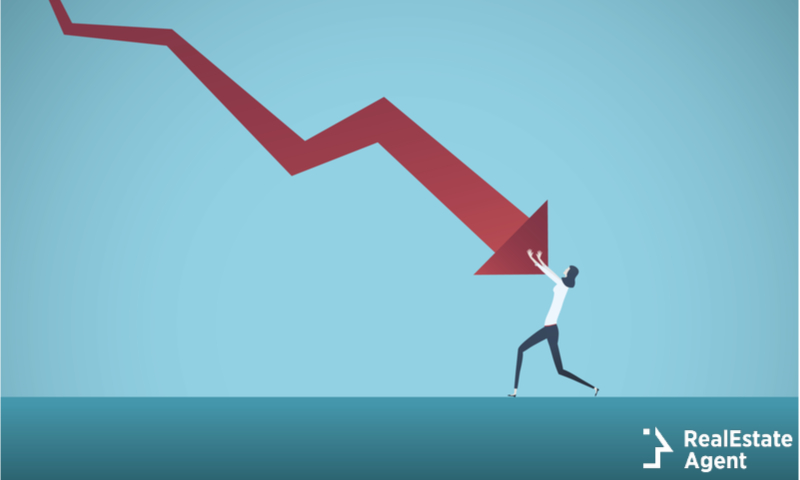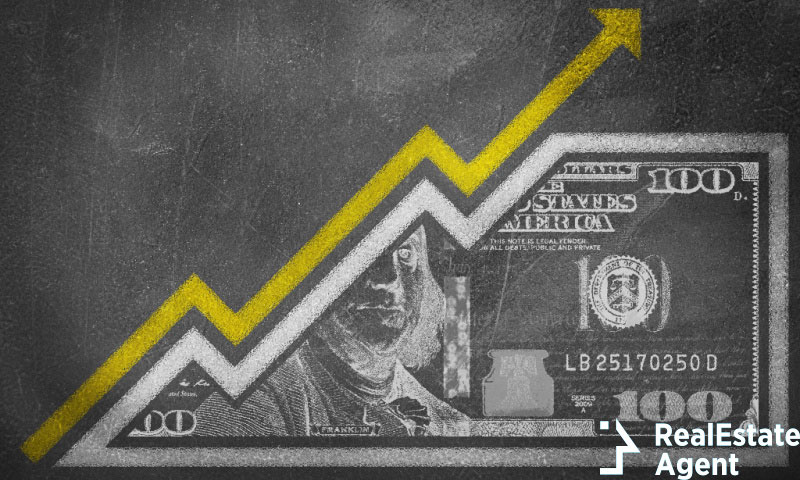This title may sound like the title of an upcoming Science Fiction bestseller. If you have a wild imagination, you may even envision the perfect society – large remote cities, like old fortresses, only with a lot more technology and their own currency, sheltering populations under very strict economic and moral laws. However, what makes a city recession-proof? And what are the cities least affected by a recession?
It would be great if we had a magic formula that would keep recessions away. Economists are yet to find it. Although, like it happened in the past, we might realize that we had been going through an economic recession right at the end of it. So, let’s imagine how a recession-proof recipe would look like.
For the cake topper:
- 10 cups of investments in infrastructure
- 2 cups of treasury bonds and municipal bonds
For the cream:
- 1 huge university
- 3 grade A school districts
- Hundreds of large employers
For icing:
- 2 tsp pure vanilla extract
- 3 cups of magic dust
- a lot of luck
Let’s find the role of each ingredient.
Recession-proof cities have good infrastructure

According to the American Society of Civil Engineers, roads in the US get a D grade as they are not in the best shape ever. We boast four million miles of roads, but most of it suffers from chronic underfunding. Otherwise, this ingredient is quite important – the better the infrastructure, the higher the chance to withstand an economic downturn. Why? Because employees can commute a lot easier and the merchandise reaches the stores faster. Also, parcel delivery services could do a lot better if the roads were in good condition, thus contributing to the success of online commerce. Airports and railroads also increase economic resilience. And tourism must be protected and encouraged at all costs.
So, the top 10 states (and cities) with the best infrastructure in the US are:
- Oregon (the city of Eugene)
- Washington (Seattle)
- Utah (Salt Lake City)
- Nevada
- North Dakota
- Kansas
- Minnesota (Minneapolis)
- Nebraska (Omaha)
- Colorado
- Georgia (Atlanta)
Recession-proof cities and the financial market

It is true that the last recession originated in the banking system. Perhaps it won’t make the same mistake again, but what happens in the financial market usually materializes in the real world. In fact, did you know that among the 500 companies that make up the S&P 500 index there are 21 banks? Since the foreclosure rate is at its lowest level since 2010 and the interest rates quite low, there are slim chances to see a recession emerge from the banking sector. But let’s not forget about the new trade war with China that might affect US manufacturers in the S&P 500. With more expensive imports, it will be hard to maintain their profitability, so the cities with large employers that rely a lot on imports might be in trouble.
According to worldtopexports[dot]com, the top five states with most imports in 2018 were California ($441.2 billion), Texas ($304.6 billion), Illinois ($157.4 billion), Michigan ($146.8 billion), and New York ($137.1 billion). How the trade war will evolve we are yet to find out.
When the economy is not doing very well, to offset the balance, bond yields are a good way to generate funds for further investments and for the protection of local businesses. Do you remember the major bailouts of the last recession? After all, people invest in bonds because they are considered one of the safest financial securities. Treasury bonds have also rebuilt our country after the Great Depression. However, due to the already high amount of national debt, in the event of an economic crisis, the government will have to borrow money at an elevated cost.
So, from a financial perspective, where can you find recession-proof cities? Look for the states with very high real GDP per capita and moderate imports. The states with the highest real GDP per capita in 2018 were New York ($73,531), followed by Massachusetts, Alaska, Connecticut, and California. The first and the last state had very high imports, so they may not perform well during the trade war. Connecticut is already on the list with the cities most vulnerable to be hit by a recession, so we are left with Alaska and Massachusetts. Because Alaska has the highest unemployment rate, we might have to say that Boston, Massachusetts deserves the label of “recession-proof city”.
Recession-proof cities have good school districts and universities

Schools and colleges have the ability to preserve jobs during an economic turmoil. When times are tough, the last thing the state should sacrifice is the education system. Our schools have their strengths and weaknesses, but they are the nurseries of our future leaders, from entrepreneurs to politicians. And in most parts of the country, the school districts are important for the real estate market as well. Unfortunately, the best schools are usually located in very expensive neighborhoods and in the states with fairly high taxes.
According to niche[dot]com, the best school districts in the US seem to be in the state of Illinois. Glenbrook High Schools District 225 in Glenview, IL tops the list. Other key players in the online marketing of real estate have designated Jericho Union Free School District in Jericho, New York as the best school district in the country. On alarms[dot]org, Naperville Community School District 203 is featured as the best school district of 2018, while according to thebestschools[dot]org, the best high school in the US seems to be Thomas Jefferson High School for Science and Technology in Alexandria, Virginia. Obviously, all those who attempt to create a top of the best schools use different criteria and no two websites will arrive at the same conclusion. However, an Ivy League university is more likely to push up the level of primary and secondary education in a city, for sure.
So, we can safely say that college towns are among the recession-proof cities. The ranking released by the US News tells us that Princeton University is currently number one. So, whether you’re interested in investing in Princeton, NJ or moving to this state, feel free to contact one of the real estate agents in Princeton and explore the local real estate market. However, be aware that New Jersey is the state with the highest foreclosure rate and the state with most outbound moves. Still, Princeton is more likely to remain afloat if the economy sinks.
In Massachusetts, we find two large universities, Massachusetts Institute of Technology and Harvard, both in the city of Cambridge. Together, these two world-renowned universities have an enrollment of over 10,000 students. This translates into a dynamic economic environment that helped the entire state weather the recession better than other states. So, Cambridge deserves to be among the recession-proof cities as well.
However, the cities that host the largest universities in the US should also be deemed as recession-proof cities. These are:
Lynchburg, Virginia – home of the Liberty University which boasts the highest enrollment, with over 75,000 students last year.
Fullerton, California – the hometown of California State University which has a little over 70,000 students
College Station, Texas – Texas A&M University (67,580)
Orlando, Florida – University of Central Florida (66,183)
Columbus, Ohio – The Ohio State University (59,837)
Recession-proof cities attract many tourists

Obviously, when a city is flooded with tourists, there’s a lot of economic activity and as long as the income level of those who cater to tourists doesn’t change, an economic recession basically is deprived of its power. According to Statista, the top five cities that attracted the most tourists in the US during 2017 and 2018 are New York City, Miami, Los Angeles, Las Vegas, and Orlando. But tourism might be a life vest only if the recession is mild and doesn’t spread to the whole planet. If there is a global recession, there’ll be less money for leisure travels and these cities may see a decrease in the number of tourists, just like it happened in 2008. Nevertheless, cities that currently have a huge influx of tourists should fare better in a recession than the least visited cities.
Recession-proof cities have a low unemployment rate

Vermont, North Dakota and Iowa had the lowest unemployment rates this July. Not surprisingly, Vermont is also one of the states with most inbound moves. From this perspective, the city of Montpelier seems like a good fit among the other recession-proof cities. New Hampshire, Hawaii, and Utah also boast unemployment rates way below the national average. But a low unemployment rate paired with high salaries forms an indestructible bind. As you probably know, the highest salaries are in California, but the state also has an unemployment rate above the national average, not to mention the homelessness crisis. Washington D.C. and Bridgeport also offer some of the best wages, but we’ve already seen that they are blacklisted and very likely to succumb to recession. So, from the cities with highest paid jobs we are left with Seattle and Tacoma from Washington, where the starting salary is about $4,000 and Boston, again. To be consistent, though, we would have to abandon the cities from Washington since the state is facing a spike in unemployment, at 4.6%. But maybe the good infrastructure compensates for it.
Well, the recession proof cake is almost ready. All we have to do is to pour the icing and we are good to go. It may not have a mouthwatering look if you didn’t find all the ingredients in your area, however, maybe you can find a real estate agent on RealEstateAgent.com who knows where you can find all the ingredients. So, are you ready to move to a recession-proof city? Yes or no? Leave a comment below and let us know what city you would like to move to.








